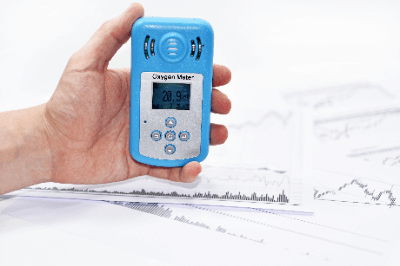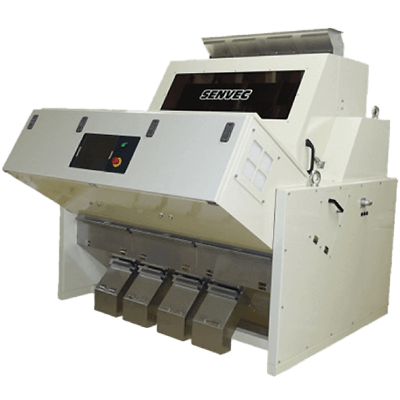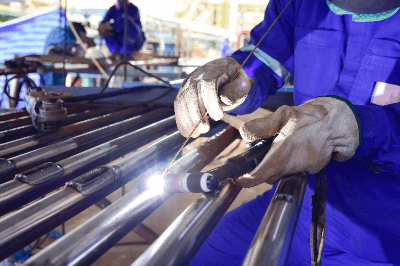What Is a Tarpaulin?
A tarpaulin is a sheet made of special materials designed to shield against heat, electromagnetic waves, radiation, and other potentially harmful effects on living organisms and electronic devices.
Tarpaulin shielding effectiveness increases with thickness, providing enhanced protection against adverse effects. Tarpaulins can offer high levels of effectiveness when chosen appropriately for specific applications, as the materials used exhibit varying characteristics, including workability.
Additionally, films and sealed products are manufactured to conform to the shape of the object requiring shielding.
Uses of Tarpaulins
Tarpaulins are primarily employed to block external radiation and are commonly used in the following scenarios:
1. Radiation Tarpaulin
Radiation tarpaulins serve the purpose of shielding against external radiation. These shielding sheets are utilized in protective clothing and equipment to safeguard workers from radiation exposure, particularly in environments involving the handling of radioactive materials. Examples include the disposal of radioactive waste at nuclear facilities and reconstruction work in areas affected by nuclear power plant accidents.
Medical facilities dealing with radiation may also use them to shield against X-rays and gamma rays generated by particle beams such as electrons, neutrons, and protons, which are employed in radiation therapy to treat tumors.
2. Electromagnetic Wave Tarpaulin
Electromagnetic wave tarpaulins are used to mitigate the effects of electromagnetic waves originating from sources like broadcasting stations, smartphone base stations, and electronic devices such as smartphones and tablets. These waves have the potential to negatively impact human health and disrupt electronic equipment. Tarpaulins are employed to attenuate the effects of such electromagnetic waves effectively.
Principles of Tarpaulins
The principles behind tarpaulins are rooted in the properties of specialized materials capable of shielding against radiation. The characteristics of tarpaulins can vary significantly based on the materials utilized.
1. Radiation Shielding Tarpaulin
Radiation shielding sheets are crafted from materials like lead or tungsten to achieve exceptional shielding effectiveness. However, they tend to be heavy and less manageable. When using such materials, consideration must be given to their appearance, particularly when bending or joining them to suit specific applications.
Tarpaulins composed of rubber or resin are designed to enhance shielding effectiveness by dispersing materials that can shield or absorb radiation within the sheet.
2. Electromagnetic Wave Shielding Tarpaulin
In electromagnetic shielding, conductive materials like copper are employed to surround radio waves. These materials reflect and scatter the waves on their surfaces, preventing their penetration or leakage. Magnetic shielding employs iron-based materials that can be magnetized to enclose and redirect magnetic fields, thus preventing their ingress. The demand for magnetic shielding has increased, especially for electronic devices like MRIs, which are susceptible to magnetic interference.
Additional Information on Tarpaulins
1. Radiation Shielding Tarpaulin
The selection of the appropriate tarpaulin should align with the type and energy level of the radiation source.
Alpha Rays
Alpha rays consist of helium ions composed of two protons and two neutrons. They are typically emitted from the nucleus of a radioactive isotope through a process known as alpha decay. Due to their low energy (less than 10 MeV), alpha rays have limited penetrating power and can be effectively blocked by materials as simple as a sheet of paper, rendering tarpaulins unnecessary for this purpose.
Beta Rays
Beta rays are emitted through beta decay from the nucleus of a radioactive isotope. They pose no health risks and do not cause electronic equipment malfunctions, thus obviating the need for tarpaulins.
Gamma Rays
Gamma rays, originating from the nucleus of radioactive isotopes, consist of photons. They possess high penetrating power and, while they do not directly induce electronic equipment failures, they can cause material degradation and pose significant health hazards. Effective shielding against gamma rays often requires the use of materials such as lead or tungsten, with thicknesses tailored to the specific gamma ray energy.
For lower-energy gamma rays, tungsten alloys, mainly comprising tungsten, are commonly used for tarpaulins due to their lower environmental impact. However, these materials can be inflexible, challenging to work with, and relatively expensive due to the high-temperature sintering process. To address these issues, a new type of tungsten sheet made of tungsten powder and recyclable elastomer resin has been developed. This composite material results in a flexible, high-density tungsten sheet with improved workability.
X-Rays
X-rays are essentially the same as gamma rays but are artificially produced using devices like X-ray tubes. They are primarily used for medical and industrial X-ray examinations and generally have lower energy levels (a few keV) compared to gamma rays. They do not pose health risks and do not interfere with electronic equipment, making tarpaulins unnecessary. White barium sulfate is sometimes used during upper gastrointestinal tract X-rays to enhance X-ray attenuation and improve radiographic resolution.
Neutron Radiation
Low-dose, high-energy neutron beams exist naturally, with a rate of approximately 12 neutrons per square centimeter per hour. Although they are not harmful to humans, they can disrupt electronic equipment. Shielding high-energy gamma and neutron rays typically requires materials like lead and concrete walls several meters thick. Weaker, low-energy neutrons are shielded using hydrogen-rich materials like paraffin, polyethylene, and water, often supplemented with B-10, a substance containing boron. Environmental considerations are crucial, as gadolinium and cadmium are toxic materials commonly used for neutron shielding.
For medical applications involving tumor treatment with neutron beams, high-energy electron beams, or proton beams, gamma and neutron radiation are also generated. As a result, shielding materials are necessary around the irradiation equipment.
2. Electromagnetic Wave Tarpaulin
Tarpaulin shielding sheets are typically composed of thin PET (polyethylene terephthalate) film with a conductive shielding layer, such as copper, applied through vacuum deposition on the surface. These sheets provide excellent electromagnetic shielding properties while remaining lightweight, flexible, and breathable. The porous structure of the film enhances its anchoring effect.
Utilizing its high shielding performance and thin film characteristics, this type of sheet is employed for electromagnetic shielding in various electronic devices, including space-saving mobile devices and cable sheathing materials requiring curvature processing.
Tarpaulins are also available in flexible paper and film forms made from stainless steel and copper materials using paper-making technology. These sheets can be easily cut into desired shapes using scissors or cutters. During processing, sintered metallic fibers prevent fiber shedding, and attention is paid to their impact on the working environment.
This type of tarpaulin sheet combines the advantages of metal conductivity, paper-like cushioning and flexibility, and the anchoring effect and air permeability offered by its porous structure. Based on these qualities, it is used as noise suppression material in various electronic devices and as an electromagnetic wave shielding filter for pressure reduction in differential applications.



